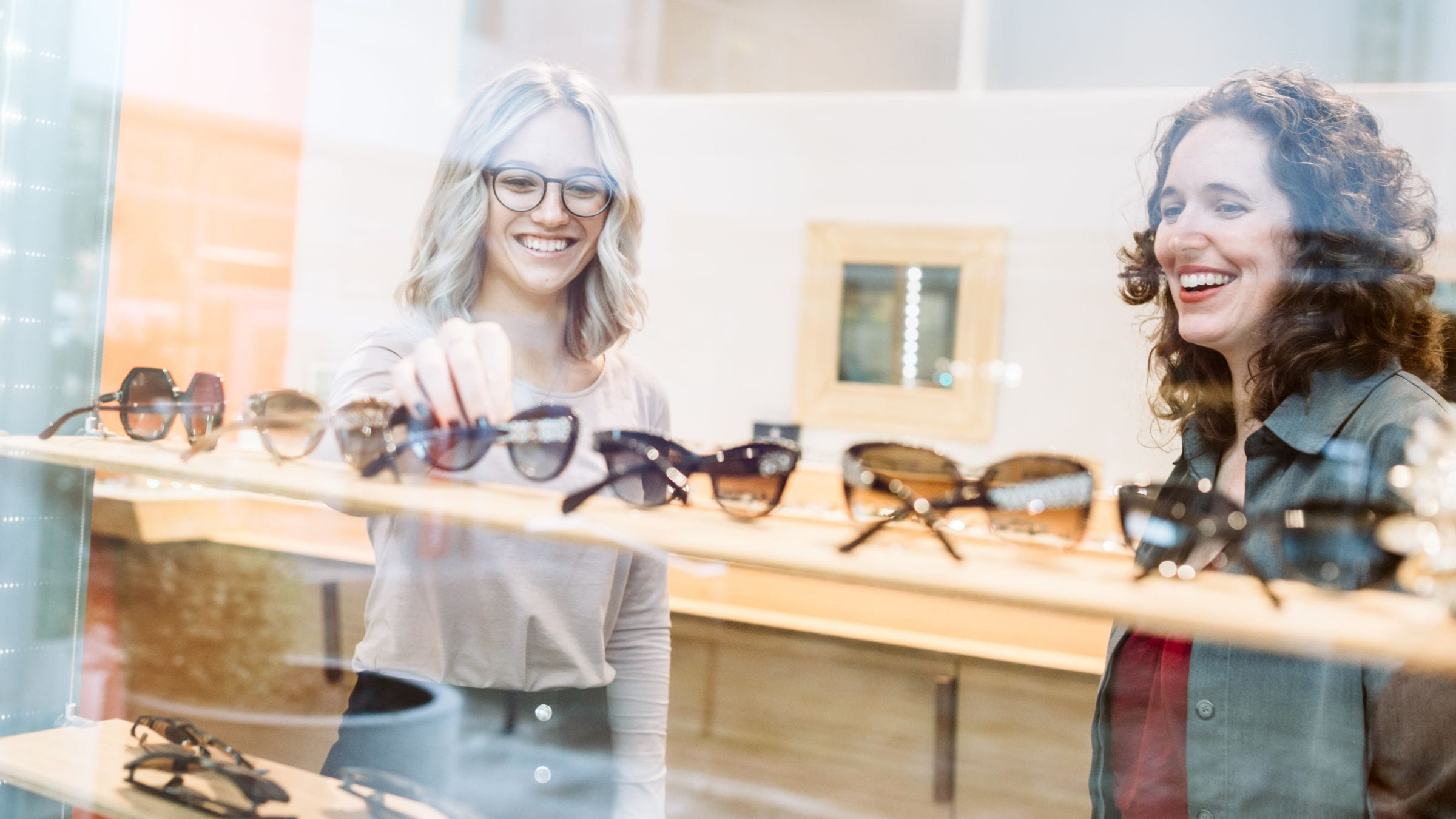
Ultraviolet radiation from the sun is associated with a lot of energy that can damage not only our skin, but also the surface of the eye and even structures within the eye. Fortunately, the front of the eye does a good job of blocking most of the ultraviolet light from entering the eye, though some still is absorbed by the lens and the retina.
The younger you are, the more the eye will transmit ultraviolet (UV) light to the lens and retina. While some UV problems, like sunburn, are evident in the short term, most of the problems in the eye, such as cataracts, are due to cumulative exposure, and they develop over decades.
Sunglass lenses that block UV light offer protection to the eyelids, the surface of the eye and the internal structures of the eye. I recommend wearing sunglasses as a child and continuing to use them throughout life.
It's important to wear UV-protective sunglasses in any situation where you’ll be exposed to prolonged outdoor light. UV is present even on cloudy days.
To help you select the protective lenses that are best for you, I’ll answer a few common questions.
Is 100% UV protection the same as polarized for sunglasses? What’s the difference?
No, UV protection isn’t the same as polarization — these are distinct lens properties.
The 100% UV labeling indicates that the lens will block (not transmit) any light that’s in the ultraviolet portion of the electromagnetic spectrum. This light is made up of short wavelengths, and the shorter the wavelength, the higher the associated energy. If the lens is marked for 100% UV blocking but is also tinted (all sunglasses), for example gray or brown, some of the visible portion of the spectrum is also blocked.
To understand polarization, you need to understand that light travels through the atmosphere in waves that are vertically, horizontally or obliquely oriented. Polarization means that a special filter only lets in specifically oriented waves. For example, some polarized glasses only let in vertically oriented waves. By blocking the oblique and horizontal waves, the individual wearing the lenses sees less scatter or glare.
What are the pros and cons of polarized sunglasses?
Most people, if given the choice, would choose polarized lenses for most activities. If you like to fish or are on the water a lot, polarization allows you to see a little better into the water and reduces glare off the ripples or waves. Some individuals also prefer polarization when skiing, to cut down on glare from the highly reflecting snow. The shiny reflections off windshields on a sunny day can be greatly reduced with polarized lenses, which can make driving more comfortable.
The cons of polarized lenses are that they are more expensive. Also keep in mind that polarization on its own doesn’t block UV.
If you choose polarized sunglasses, it’s important to make sure they carry the 100% UV-blocking label to protect your eyes from sun damage.
Interestingly, some common electronic devices, including tablets, phones, flat screens and displays in vehicles, may also be polarized, and this can be a problem if viewing these surfaces while wearing polarized glasses. If a screen, say a tablet, is polarized 90 degrees in the opposite direction of the sunglass polarization, then no light will get through the lens and the individual will only see a black image through the lens.
One simple trick to determine if a lens is polarized is to look at a television screen while holding the pair of sunglasses out at arm’s length. Rotate the frame 90 degrees and look through the lens at the screen. If the lens is black, then no light is getting through and that pair of sunglasses is polarized.
Are polarized sunglasses worth the extra cost? Why or why not?
This is personal preference and depends on what you’re trying to achieve with the sunglasses. If glare is a big concern, then polarization would be high on the demand list. If glare is of little concern, then you can probably go without it. If you play a sport at a high level, it would be best to try to test which lens type performs the best for you while performing the skills necessary for the sport.
What color lens is best for sun protection?
For sun protection, you want 100% UV blocking. The lens could actually be clear and still block most UV (for example, polycarbonate safety glasses). So the color is not the critical factor. First, find the UV label, then try on various colors available. Most people will prefer either a brown or a gray. For example, I like to play golf, and I prefer to wear a brown-tinted lens. Others prefer gray or another color. Companies often market some tints for specific sports but, again, it’s up to you to determine what you think is most comfortable.
Do contact lenses provide UV protection?
It depends on the lens brand. Several brands from a variety of manufacturers offer UV blocking by adding special chemicals to the lenses to absorb the UV light, effectively blocking UV transmission.
You may see a “Class 1” or a “Class 2” UV blocker labeled on the packaging. A Class 1 blocker will block 99% UVB and 90% UVA. A class 2 will block 95% UVB and 70% UVA. Briefly, UV is categorized as A, B or C. The most dangerous is “C” (shortest wavelengths = highest energy) but, fortunately, those rays are absorbed by Earth’s atmosphere. Then there is UVB, which is more dangerous than UVA, and those rays are more important to block than UVA. The UVA portion of the spectrum is approaching the wavelengths of visible light and, while not as dangerous as UVB or UVC, those wavelengths can still cause problems over time. A cursory internet search on UV-blocking contact lenses will yield several options, and you can always speak with your eye care practitioner about UV-blocking contact lenses.
What else should I look for when buying sunglasses?
When buying sunglasses, focus on the following, in order of importance:
- Make sure they have 100% UV blocking
- Make sure you prefer the tint — try a few and determine which one you like best
- Determine whether you want polarized lenses or not
- Make sure you like how the sunglasses look on your face and that they feel comfortable
Keep in mind that sunglass lenses can also correct for your vision problems. If you have a prescription, a corrective pair of sunglasses is always an option. Another option is Transitions – these are lenses that will darken when exposed to UV light (outdoors) and then clear up once the UV is no longer present (indoors). There is even a brand of contact lens that incorporates Transitions technology, that provides visual comfort from the tint, and is also a Class 1 UV blocking lens.

Great vision starts here
Ohio State's optometry clinics provide world-class eye care for your entire family.
Schedule an appointment




